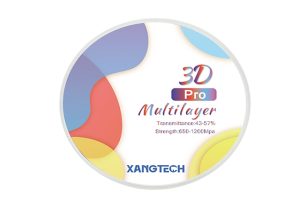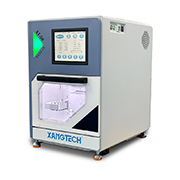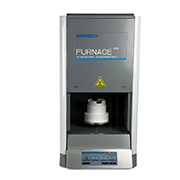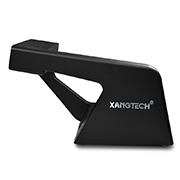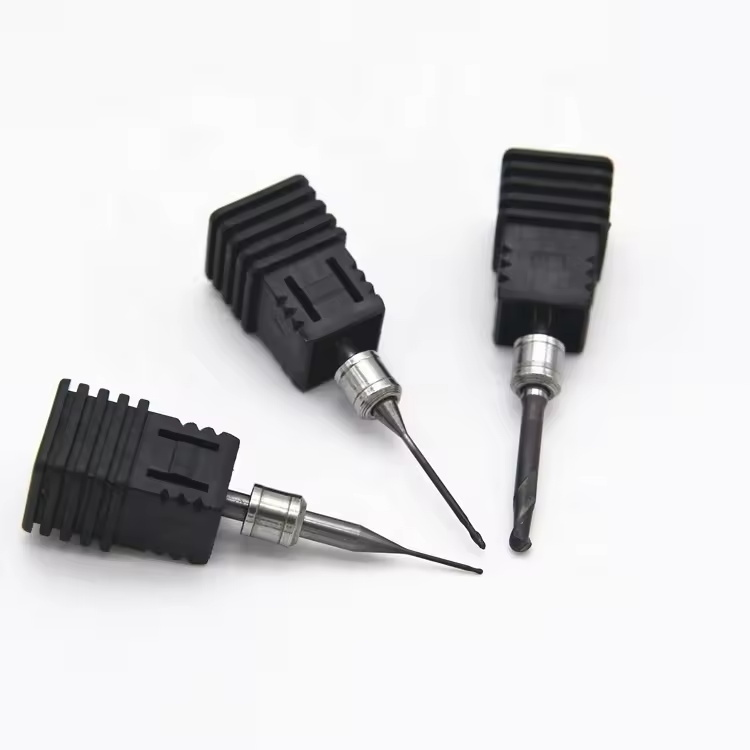Understanding CAD CAM Milling Burs
The Role of CAD CAM Milling Burs in Dentistry
In today’s digital age of dentistry, CAD CAM milling burs hold significant importance. These specialized instruments are vital for crafting accurate dental restorations like crowns, bridges, and implants. By leveraging computer-aided design (CAD) and computer-aided manufacturing (CAM), dental experts can achieve high levels of precision and efficiency in their procedures. The accuracy provided by these tools ensures that dental prosthetics fit better and offer more comfort, which directly enhances patient satisfaction and clinical outcomes.
Advanced milling burs enable dentists to handle a variety of materials, including zirconia, porcelain, and composite resins. It is well known that zirconia block is very strong and also very biocompatible. Their versatility allows for the execution of complex designs that would be difficult, if not impossible, with traditional manual methods. By relying on CAD CAM milling bur, dental laboratories can meet the growing demand for high-quality dental devices while maintaining consistency and reproducibility.


Key Attributes of High-Quality Milling Burs
The performance of a CAD CAM milling bur is largely dependent on several key attributes. Firstly, material hardness and wear resistance are crucial, as they determine the bur’s ability to withstand prolonged use without deteriorating. High-hardness materials such as tungsten carbide are often used for this purpose. Secondly, the sharpness and design of the cutting edges play a significant role in achieving fine, detailed results without causing undue stress to the material being milled.
Moreover, the dimensional accuracy and stability of milling burs are vital. Burs must maintain their shape and tolerance throughout their lifespan to ensure consistent performance. The integration of advanced features such as anti-vibration designs can also enhance the milling process by reducing tool chatter and improving surface finish. Lastly, the compatibility of milling burs with various machines and dental materials is essential for their widespread application and adaptability in dental laboratories.
Exploring Bur Coating Technology
Benefits of Advanced Coatings for Milling Burs
Increased Durability and Longevity
The application of coatings to CAD CAM milling burs significantly prolongs their lifespan by offering a protective layer against wear and corrosion. Advanced coatings, such as Diamond-Like Carbon (DLC) and Titanium Nitride (TiN), improve the hardness and durability of the burs. This enhancement allows them to retain their cutting efficiency for more extended periods. Consequently, this leads to fewer replacements, which reduces both operational costs and downtime for dental laboratories.
Durable coatings also improve resistance against harsh environmental conditions and the abrasive nature of dental materials. This means that milling burs can consistently produce high-quality restorations without a notable decline in performance. For instance, Nanyang Liandong Biotechnology Co., Ltd., known for its dental products, highlights how their coated burs exhibit excellent performance and longevity, even after extensive use.
Enhanced Precision and Performance
Coatings not only prolong the life of CAD CAM milling bur but also enhance their precision and cutting performance. A coated bur experiences reduced friction during milling, leading to smoother and more accurate cuts. This precision is crucial in creating intricately detailed dental restorations that fit perfectly with minimal post-processing adjustments.
The reduction in friction also translates to less heat generation, which can otherwise lead to material damage and compromised structural integrity of the dental prosthetics. By utilizing advanced coatings, dental laboratories can achieve superior outcomes, ensuring that the restorations are both durable and aesthetically pleasing. DentalXangtech, for example, emphasizes the importance of using high-quality coated burs in achieving remarkable precision and reliability in dental restoration fabrication.
Types of Coatings for Milling Burs

Diamond-Like Carbon (DLC) Coatings
Diamond-Like Carbon (DLC) coatings are celebrated for their outstanding hardness and low friction characteristics. When these coatings are applied to a CAD CAM milling bur, they produce a surface that is highly resistant to wear and tear. DLC coatings emulate many of the properties found in natural diamond, offering the burs a level of hardness capable of enduring the rigors of milling tougher dental materials, such as zirconia.
In addition to their durability, DLC coatings reduce the adhesion of material residues to the burs, ensuring cleaner operations and easier maintenance. This enhances the overall milling quality and efficiency, allowing dental professionals to achieve optimal results with less effort. Companies like Nanyang Liandong Biotechnology Co., Ltd. have successfully incorporated DLC coatings into their burs, resulting in superior performance and longer tool life.
Titanium Nitride (TiN) Coatings
Titanium Nitride (TiN) coatings are another popular choice for enhancing the performance of CAD CAM milling bur. Known for their golden hue and impressive hardness, TiN coatings provide robust protection against wear and oxidation. Burs coated with TiN exhibit increased stability and a reduced tendency to dull, which is essential for maintaining consistent cutting precision.
One of the significant advantages of TiN coatings is their biocompatibility, making them ideal for use in medical and dental applications. The TiN layer serves as a barrier, preventing metal ions from leaching into the surrounding material, which is vital in maintaining the integrity and safety of dental restorations. DentalXangtech highlights the efficacy of TiN coatings in their product range, underscoring the importance of utilizing advanced coatings for achieving high-quality dental outcomes.
By incorporating these innovative coatings into CAD CAM milling burs, dental experts can experience prolonged tool life, superior accuracy, and overall enhanced functionality of their equipment. This not only streamlines the milling process but also guarantees that patients receive robust and meticulously crafted dental restorations.
Innovations by DentalXangTech in Bur Coating

Overview of Nanyang Liandong Biotechnology Co., Ltd.
Nanyang Liandong Biotechnology Co., Ltd. is a reputable entity in the dental industry, known for its innovative advancements in dental tools and materials. With a strong focus on research and development, the company strives to enhance the quality and performance of dental restoration tools. Their commitment to excellence has led to the development and implementation of cutting-edge technologies in their range of products, including the CAD CAM milling bur. This dedication to innovation ensures that their tools meet the evolving needs of dental professionals, providing superior results and enhanced patient care.
Spotlight on XANGTECH’s Product Range
Introduction to Their Milling Burs Collection
XANGTECH’s dental milling burs collection is designed to address the demanding requirements of modern dental laboratories. These burs are available in various shapes and sizes, each tailored for specific applications in dental restoration. The collection includes burs suitable for milling a wide range of materials, from zirconia to composite resins, ensuring that dental professionals can find the right tool for every task. By incorporating advanced features and high-quality materials, XANGTECH’s milling burs deliver exceptional performance and durability.
Cutting-Edge Coating Technologies Used
The coating technologies employed by XANGTECH are at the forefront of enhancing milling bur performance. These advanced coatings, such as Diamond-Like Carbon (DLC) and Titanium Nitride (TiN), provide significant benefits that include increased durability, enhanced cutting precision, and improved resistance to wear and corrosion. By reducing friction and heat generation during milling, these coatings help maintain the structural integrity of the dental materials and ensure precise, clean cuts. XANGTECH’s application of these coatings reflects their commitment to providing high-quality, reliable tools that elevate the standards of dental restoration.
Application and Maintenance Tips for Optimal Results
Best Practices for Use of CAD CAM Milling Burs
To achieve the best outcomes when using a CAD CAM milling bur, it is essential to follow best practices. First and foremost, always ensure that the bur is properly installed and securely tightened in the dental milling machine. This prevents any wobbling or slipping that could compromise the precision of the milling process. Additionally, selecting the appropriate bur for the material being milled is crucial. Using the right bur for specific materials like zirconia or porcelain not only enhances the outcome but also prolongs the bur’s lifespan. For optimal results when utilizing a CAD CAM milling bur, adherence to best practices is paramount. Initially, it is critical to verify that the bur is correctly installed and firmly secured within the milling machine. This measure eliminates any potential for wobbling or slipping that might affect milling accuracy. Moreover, choosing a suitable bur for the specific material being processed is essential. Employing an appropriate bur for materials such as zirconia or porcelain not only improves the final product but also extends the durability of the bur.
Regular inspection of the burs for any signs of wear or damage is another key practice. Worn or dull burs can lead to poor milling results and potentially damage the dental restoration being created. Replacing burs before they become excessively worn ensures consistent quality and precision. Lastly, adhering to the manufacturer’s recommendations regarding speed and feed rates can optimize the milling performance, reducing stress on the bur and improving overall efficiency.
Maintenance and Care for Prolonged Life and Efficiency

Proper maintenance and care are vital for ensuring the prolonged life and efficiency of a CAD CAM milling bur. After each use, burs should be carefully cleaned to remove any debris or residue that could affect their performance. Ultrasonic cleaners can be particularly effective in reaching the intricate areas of the burs, ensuring thorough cleaning. Additionally, proper storage practices, such as keeping burs in a clean, dry environment, can prevent rust and corrosion.
Regular lubrication of moving parts in the milling machine, as recommended by the manufacturer, can also prolong the life of the burs by reducing friction and wear. Keeping the machine well-maintained ensures smooth operation and consistent milling quality. Furthermore, periodic calibration of the milling machine helps maintain the precise alignment and operation, which is critical when working with highly detailed dental restorations. By following these maintenance tips, dental professionals can maximize the efficiency and lifespan of their milling burs, ensuring high-quality results and cost-effective operations.
Comparative Analysis of Different Product Offerings
Key Differences Between Various Types of Burs and Coatings
The CAD CAM milling bur market provides a diverse range of products, tailored with unique materials and coatings to fulfill various dental milling requirements.
Detailed Comparison Table
| Feature | Tungsten Carbide Burs | Diamond-Like Carbon (DLC) Coated Burs | Titanium Nitride (TiN) Coated Burs |
| Hardness | High | Very High | High |
| Friction Reduction | Moderate | Excellent | Good |
| Wear Resistance | High | Excellent | Very High |
| Heat Generation | Moderate | Low | Low |
| Surface Finish Quality | Good | Excellent | Very Good |
| Biocompatibility | Moderate | High | Very High |
| Suitable Materials | Zirconia, porcelain | Zirconia, composite resins, porcelain | Zirconia, metal alloys, composite resins |
The above table highlights some of the primary differences between milling burs with different coatings. Among them, Diamond-Like Carbon (DLC) and Titanium Nitride (TiN) coatings stand out for their wear resistance, friction reduction, and overall performance in producing high-quality dental restorations. Tungsten carbide burs, while offering good performance, may not match the advanced capabilities provided by coated burs, thus these options can be selected based on specific dental laboratory needs.
Future Trends in CAD CAM Milling Bur Technology

Evolving Innovations to Watch Out For
The field of CAD CAM milling bur technology is on the verge of several promising advancements. One notable trend is the development of hybrid coatings that combine the benefits of existing materials, aiming to deliver enhanced durability, precision, and biocompatibility. These innovative coatings are expected to push the boundaries of what is currently achievable, providing dental professionals with tools that maintain performance over extended periods.
Additionally, there is a growing interest in the integration of smart sensors within milling burs. These sensors could monitor wear levels and provide real-time feedback, enabling dental labs to optimize tool usage and replace burs before they become inefficient. Such advancements could greatly improve operational efficiency and reduce costs.
Industry Predictions and Potential Developments
Considering future advancements, the CAD CAM milling bur sector stands to gain from continuous research and development in nanotechnology. Implementing nanoparticles in coating formulations may yield more durable and efficient milling tools. These nanoparticles have the potential to improve scratch resistance and minimize wear, thereby prolonging the lifespan of the burs.
Furthermore, the industry is expected to see a broader adoption of AI and machine learning technologies. These technologies can analyze vast amounts of data to predict tool wear and performance trends, enabling proactive maintenance and reducing downtime. Dentalxangtech, as an industry leader, is likely to be at the forefront of these developments, incorporating the latest technologies to continuously improve their product offerings.
Innovation in the CAD CAM milling bur sector is also likely to be influenced by the increasing demand for personalized dental care. Customizable milling burs that cater to specific patient needs could become a norm, driven by advances in 3D printing technology. This personalized approach ensures that each dental restoration is tailored for optimum fit and comfort, enhancing patient outcomes.
By staying abreast of these trends and embracing new technologies, dental laboratories can ensure they are equipped with the most advanced tools available, leading to superior results in dental restoration and patient satisfaction.

